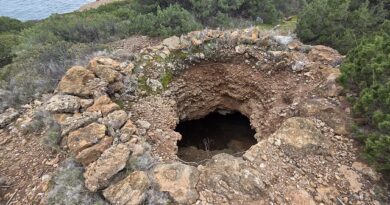Athens – Temple of Olympian Zeus (Main Temple Building)
The project to build what would have been the greatest temple known was begun in the sixth century BC, but it took nearly 650 years for the work to be completed. Sounds a bit like Brexit. But anyway, moving on from politics, the temple was dedicated to Zeus, the God of Thunder and also the head of the Olympian Gods. Incidentally, it’d irritate me to be a God and then have to answer to someone else, but that’s another matter.
The temple would have been enormously grand for the time, and indeed it remains an impressive sight nearly two thousand years on. The work was finished in the second century AD and it involved a substantial amount of effort to quarry for the marble, get it here and then erect it.
There were 104 columns and they all stood 17 metres tall, with the temple standing on a platform that measured 108 by 41 metres. That’s one sizeable building project.
In 267AD there was a Barbarian invasion of Athens and the temple was seriously damaged. If I was a Roman I’d be bloody angry at this, after all that time building it, then it was ruined. Clearly quite a few Romans were angry as they didn’t bother repairing it, not after all the effort in building it.
So for the next few centuries the site was quarried for the marble and other materials. Although there’s an interesting story about that, as no-one (or at least no-one to my knowledge) is quite sure where they were used. If there were eighty or so columns pulled down for building materials, then where are they? It is possible that they were used to make lime, although it’s surprising that some traces of the missing columns hasn’t been found.
By the medieval period there were only 21 columns left and the Turks demolished a few more for building materials, with the last one being pulled down in 1759. The section with two columns was used as a dwelling house for some time, which might have helped to save them.
Today there are fifteen columns left standing and there’s one which is still left sprawled across the ground from when it collapsed in an 1852 storm. There is a project to protect the entire site and there is talk of reinstating the collapsed column. If a column fell today it’d likely be put back, so perhaps there is a good case for doing this since all the bits are still there….
I’m not sure what this seemingly random collection of stones is, perhaps it’s part of the restoration.
I’m reminded of my visits to Malta a few weeks ago, where they produced a large volume of documentation for most of their historic sites. The Athens heritage authority haven’t burdened themselves with this heavy responsibility, instead deciding that one single sign with three paragraphs of information will be sufficient to explain this site.
There are several TripAdvisor reviews commenting on this situation, such as:
“This is one of the largest of the ancient monuments in Athens. It’s very impressive, but there is absolutely nothing to be gained in paying to enter the site. The information is almost non existent and you can see everything that you need to from outside the site. Save you money and do that.”
and:
“Only worth it if you bought the combined ticket that gets you into many attractions. Otherwise its literally only an empty field with a few columns, no signboards whatsoever. Would definitely not pay to enter here.”
I have one of those combined tickets and I must admit to being very impressed by the site, but underwhelmed by the museum’s efforts here. And I’m also surprised that this isn’t a UNESCO World Heritage site given the history.
Anyway, a truly stunning site and I’m glad that at least some of the columns have survived through the centuries.








